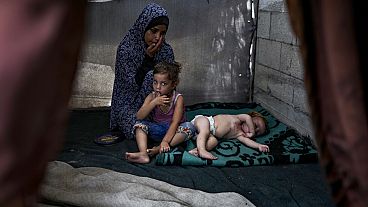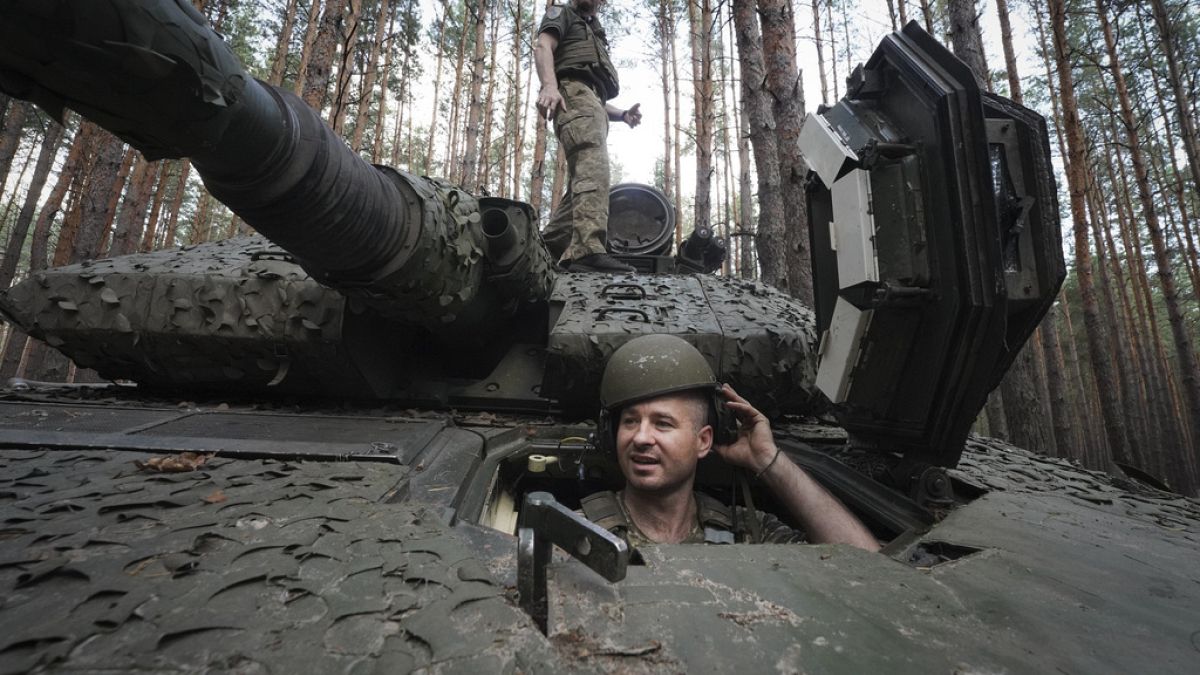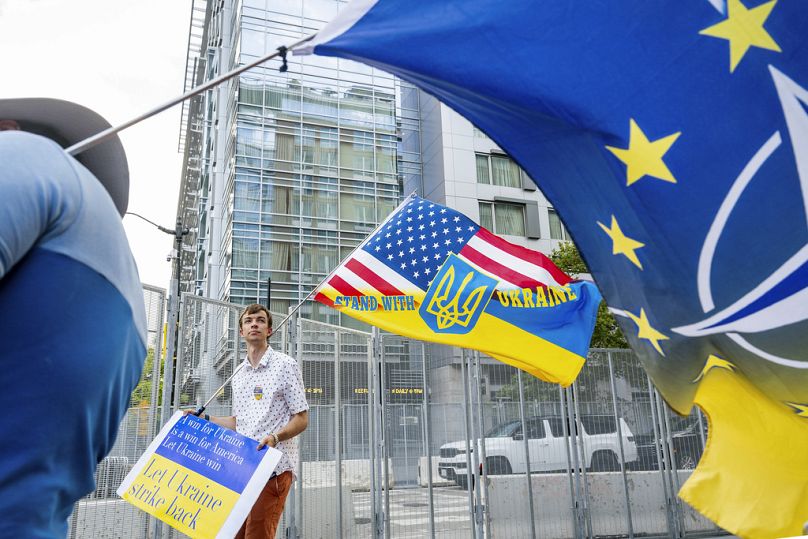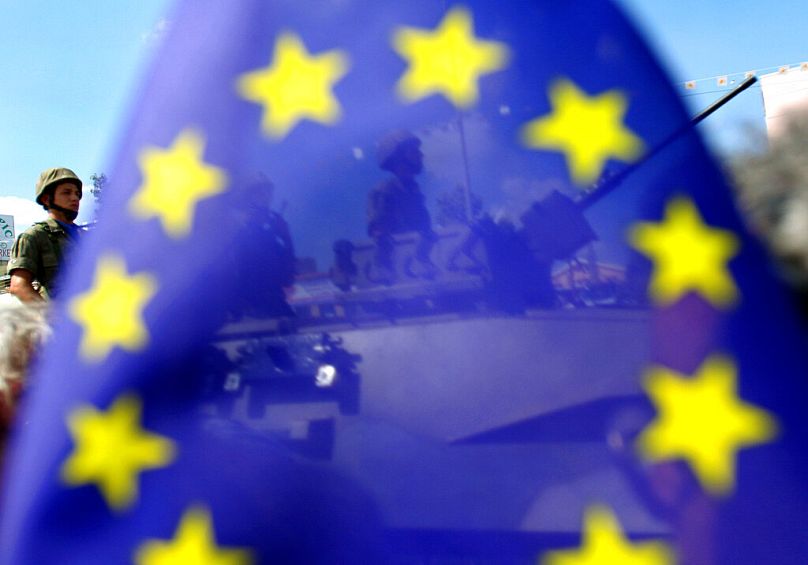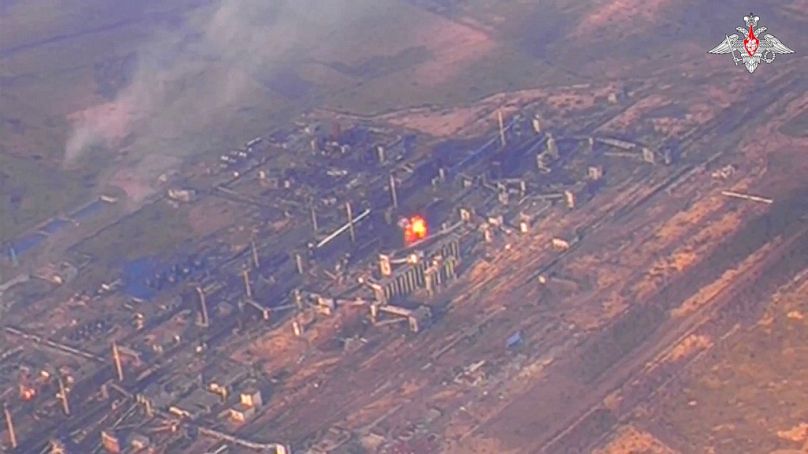Like in the 1950s, NATO seeks an effective strategic doctrine to navigate a new, challenging environment. The first step may involve gradually integrating Ukraine, but only after the conflict with Russia ends.
While gathering in Washington to celebrate the alliance's 75th anniversary, NATO's heads of state and government have taken the first step in designing the architecture of European security.
"Ukraine’s future is in NATO. We will continue to support it on its irreversible path to full Euro-Atlantic integration, including NATO membership," they announced in a joint statement.
Could this be a post-brainstorming proposal or a bid aimed at becoming an actual political and strategic goal?
Point 16 of NATO's Washington Summit Declaration states: "We reaffirm that we will be in a position to extend an invitation to Ukraine to join the Alliance when Allies agree and conditions are met."
This means that despite the firm support expressed by some members, such as the Nordic bloc, the Baltics, Poland, Romania, and the UK, the consensus for Ukraine eventually joining the alliance is not unanimous among all 32 NATO countries.
And, last but not least, the "conditions" depend on Ukraine achieving relative military and security stability. Hostilities with Russia must cease, but even a simple ceasefire currently appears to be a distant prospect.
"The stalemate in Ukraine will continue to be a headache for the alliance. Accession of Ukraine to NATO will depend on further major reforms within the country, on ending the war, and on consensus among the allies that the alliance is ready for this: three major conditions that are not at all fulfilled," says Jan Wouters, a lecturer from the Catholic University of Leuven, KU Leuven.
NATO's reason to be
The main outcome of NATO's 75th anniversary is that the alliance appears to have rediscovered its purpose. Point 6 of the Summit Declaration notes that "more than two-thirds of Allies have fulfilled their commitment of at least 2% of GDP annual defense spending and commend those Allies who have exceeded it".
The current circumstances and growing global instability place security issues at the forefront of national budgetary priorities.
Jan Wouters says, "Russia is seen as more aggressive and dangerous as ever, requiring actions on land, in the air, in the seas and outer space, and the allies also discuss the ever-mounting challenges that China poses".
Since 2014, following Russia's annexation of Crimea and the land grab in the Donbas region by local pro-Russian separatist militias backed by Russian military intelligence GRU special forces, Ukraine has been progressively integrating into NATO structures.
"We affirm our determination to support Ukraine in building a force capable of defeating Russian aggression today and deterring it in the future," the conference's documents say.
"To that end, we intend to provide a minimum baseline funding of €40 billion within the next year,** and to provide sustainable levels of security assistance for Ukraine to prevail, taking into account Ukraine's needs, our respective national budget procedures, and the bilateral security agreements which allies have concluded with Ukraine."
'Long-term security assistance'
"Irreversibility" refers to the deep and comprehensive integration of Ukrainian defence and security with its Western supporters, emphasising that simply providing military assistance is insufficient.
From a Long-Term Security Assistance perspective, Ukraine may require a structural approach. Are NATO members, including Europeans and Americans, capable of creating the necessary infrastructures for this purpose?
"The problem is that we are facing a strong military inflation. So the same artillery shells, for example, that 155mm shells that are much used and in need by the Ukrainians, have gone up in price almost fourfold," says Bob Deen, an Eastern Europe and Russian analyst for Clingendael Institute in the Netherlands.
"The (Europeans) need to first buy it for the Ukrainians and then also buy it for themselves from the same suppliers who already have waiting lists and who have difficulties ramping up their production."
According to Deen, the solution would involve increasing production within Ukraine itself.
"Already, several Western companies are either opening factories in Ukraine or exploring opportunities to do so. Production costs are significantly lower in Ukraine compared to Western Europe, where there is also a shortage of qualified personnel."
"And it's very difficult to open, for example, a munitions factory in a country like the Netherlands, which is very densely populated, and not many people want a munitions factory in their backyard. Well, as in Ukraine, this is easier," he adds.
"But then you face the challenge of Russia wanting to attack this factory. Therefore, it's essential to enhance Ukraine's air defence capabilities to protect these facilities during construction. I believe the solution lies in implementing a combination of these measures to maintain American engagement, particularly under a Trump administration," concludes Deen.
Establishing arms manufacturing in Ukraine would make its path to NATO irreversible.
The urgent military situation in Ukraine and the immediate need to support its army necessitate short-term decisions, putting pressure on the European arms industry to act swiftly under these conditions.
"We need to quickly purchase any available weapons on the market. This requires buying non-European weaponry, which negatively impacts the capacity of the European defence industry to develop its own production," says Federico Santopinto, Senior Research Fellow at the French Institute for International and Strategic Affairs (IRIS) in Paris.
"Financing the EU industry is a budgetary priority. This is why the European countries within the North Atlantic Alliance prioritise avoiding NATO's pivot to Asia and remain focused on Europe, particularly the Russian threat".
If this is the priority, Ukraine must set a clear goal, such as achieving irreversible integration with the West, especially for strategic purposes.




